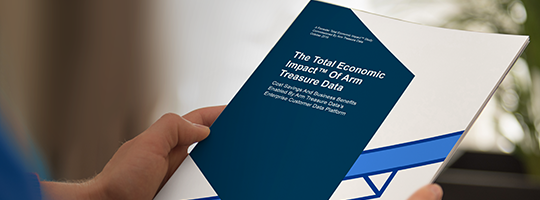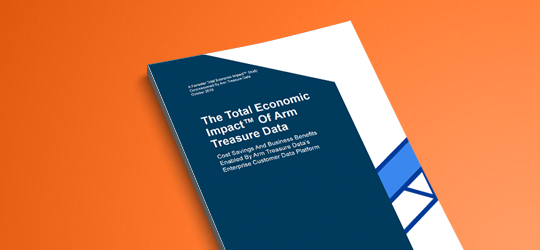Activation & Personalization
Activation and Personalization
By now, you have:
- Connected data streams to your CDP
- Cleansed, enriched and consolidated the data
- Performed AI/ML-assisted analysis to identify insights
The final step is to put these insights to work. There isn’t one right way to activate your customer insights — this isn’t a single next step all business should take.
CDP software is, by design, a flexible tool with a wide variety of possible CDP use cases. In general, CDPs can automate your next steps by using rule-based algorithms to act on your customer insight. What form that action takes depends on you: Your goals, your resources, and your imagination.
In this section, we’ll explore some of the many possible ways that CDPs can use your data to improve the quality of your marketing, boost the customer experience, and even shape the future of your business.
Boost Customer Acquisition
We’ve all heard that old adage that it costs five times as much to attract a new customer than keep an existing one. But most of us don’t have the luxury of focusing exclusively on existing customers. We must expand the customer base, and we have to do it as efficiently as we possibly can.
A CDP can help you expand your reach with lookalike audiences built on meaningful criteria. Instead of targeting with age, location, or other demographic data, you can target based on the actions that are most likely to lead to a purchase.
You can also focus on the touchpoints that are most influential to a purchase with more accurate attribution models. Your CDP data can identify the trigger points, analyze which next steps have been most effective, and even take action based on this analysis. For example, the CDP can deduce that people who visit a specific product page are more likely to open an email that promises a coupon, rather than an email announcing new products. Your CDP can then orchestrate with your email automation software to send the right email at the right time.
All of these small optimization efforts add up to impressive results over time. In their recent report, Forrester found that a typical composite company could realize over $3 million a year in benefits from new sales directly attributable to the CDP.

Improve Customer Experience
There’s a common theme to all great customer experience: Customers need to feel seen, appreciated, and valued. Your CDP can help boost customer experience in a few key ways:
- More accurate personalization. Imagine your customer has a shipping problem and hasn’t received their order yet. Instead of an email featuring new products, they get an automated follow-up that helps resolve the problem.
- Omnichannel customer service. With data united on the CDP, you can see whole customers, not just a series of isolated interactions. Customers experience a seamless conversation with the brand, and don’t have to repeat themselves in every new channel.
- Wow moments. Your data analysis can reveal the moments where a thoughtful interaction will be the most meaningful to different customer profiles. That could mean celebrating a birthday or anniversary with your customers, or inviting them into a loyalty program, or just serving up cool content they might find valuable.
- More value to your existing customers. Your analysis can identify the customers who are loyal to the brand, the ones who need some extra attention, and the ones who are close to churn. Based on these behaviors, you can deliver experiences designed to reward loyalty and deepen relationships.
No marketer needs to be told that customer experience matters. But it can be surprising just how much it matters. Our research with Forbes Insights found that 74% of consumers are at least somewhat likely to buy based on experience alone.
Learn how Muji used their CDP to improve CX across their online and offline interactions.

Engage Customers in Real Time
Data isn’t migrated into a CDP, copy-and-pasted as a frozen moment in history. Instead, data streams are connected to the platform so it can always work with live, up-to-the-moment data. The CDP can use this data to deliver tailored user experiences in the micromoment that will be most meaningful to potential customers.
For example, a customer might be walking down the street past your retail store on a rainy day. As they pass the store, a notification pops up on their loyalty app: 10% Rainy-Day Discount on All Sunglasses. It’s the exact right message at the right moment, and turns a passerby into a paying customer.
Learn how Shiseido used real-time engagement to drive a 20% increase in in-store revenue per member of their loyalty program.

Cross-Sell and Upsell
Compatibility with hundreds of marketing systems is what makes the CDP a Swiss Army knife for marketing. It’s far more than just a database and analytics platform – CDPs can integrate with Point-of-Sale systems and eCommerce solutions for detailed customer metrics.
With a better understanding of customers’ purchase patterns, you can create rules for automating follow-up messages to encourage repeat sales. If a customer buys your brand’s shoes, their next email could offer a shoeshine kit rather than trying to sell the product they already have. If they bought an entry-level bicycle, they could get a personalized email in a few months offering a more advanced model.
These are simple examples, but the possibilities are virtually endless. CDPs can analyze billions of points of customer data, identify hundreds of inflection points, and automate actions across channels and marketing tactics.
Even better, as you set rules and optimize based on the outcomes, the system will learn over time. Models become more accurate, predictions have even more certainty, and you can continue to optimize your end results.

Launch New Products and Services
With a CDP handling the data, market research can be an ongoing and transformative process. The same data that helps you fully understand the customer journey can illuminate customer demands and desires that aren’t being met in the marketplace. Data-driven R&D means that your next product or service offering has a built-in audience.
Some businesses have used CDP data to redefine — or even define in the first place — their business model. For example, in the gaming industry, there are many ways to monetize a product. Games can be free-to-play with optional purchases, ad supported, subscription based, or sold for a flat fee. Even within those options there are variables: Which optional purchases to offer, which ads to run, how much to charge for a subscription. With a CDP, game studios can use customer data to drive these decisions and maximize revenue.
Learn how gaming company MobilityWare used their CDP to improve lifetime customer value and reduce churn.

You’re Ready for Graduate-Level CDP Studies
If you have gone through all four phases in the CDP Academy, congratulations! You’re ready to make the most of your CDP.
If you’re still evaluating CDP solutions, you can request a demo to see how Treasure Data might fit your needs. You can also use our free CDP RFP template to determine which CDP is right for you (even if it’s not ours).
Insights from Our Blog
Related Articles
- Dentsu: Scaling insights with the magic of a CDP
- 3 Ways Retail Marketers Orchestrate Perfect Omnichannel Customer Experiences
- Shiseido builds customer loyalty using behavior data
- CDP Case Studies
- Beyond Compliance: GDPR, CCPA & 3 Ways CDPs Build Customer Trust
- B2B Marketers, Here’s How Customer Data Platforms Make Personalization and Selling Easier







